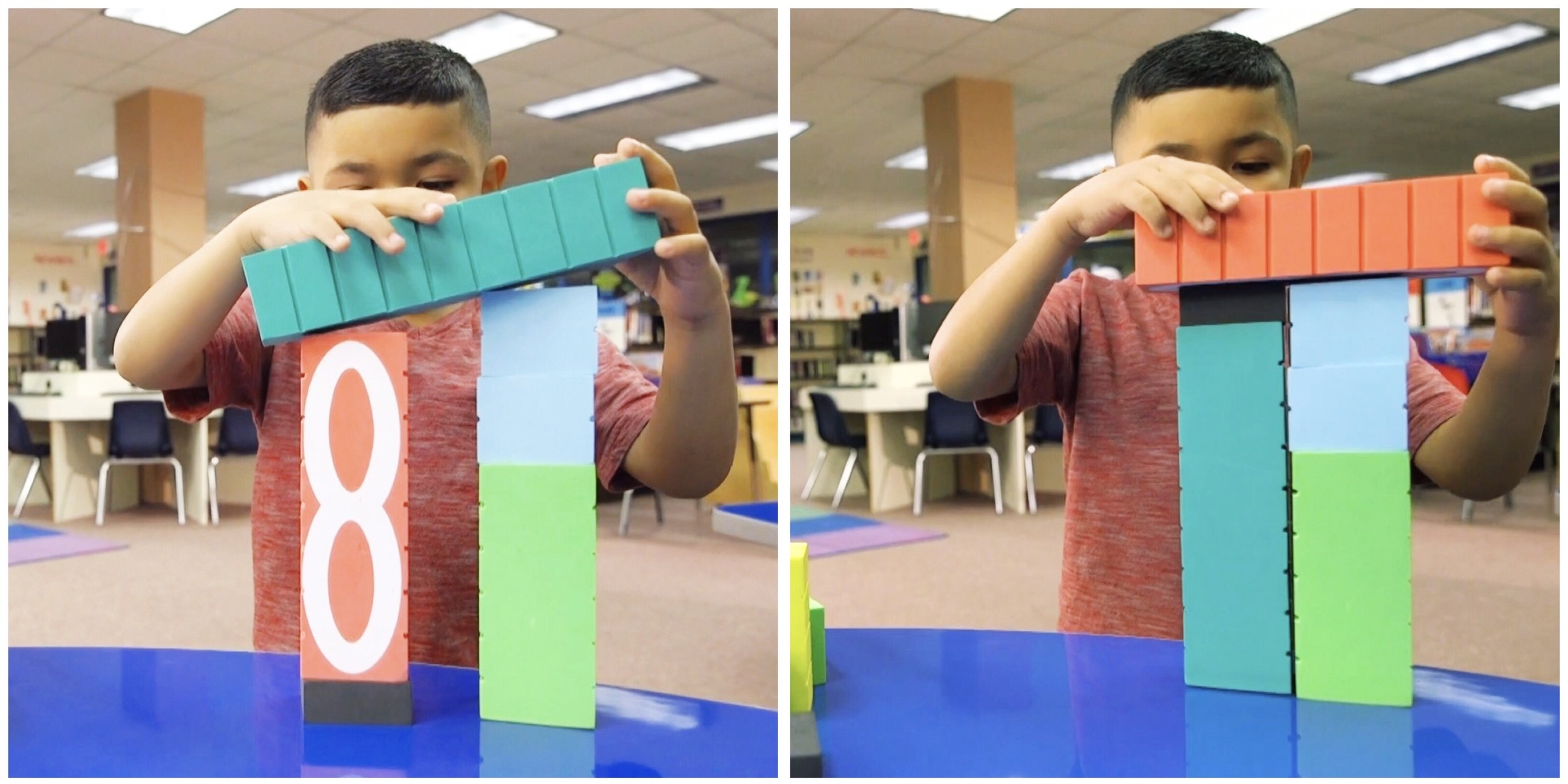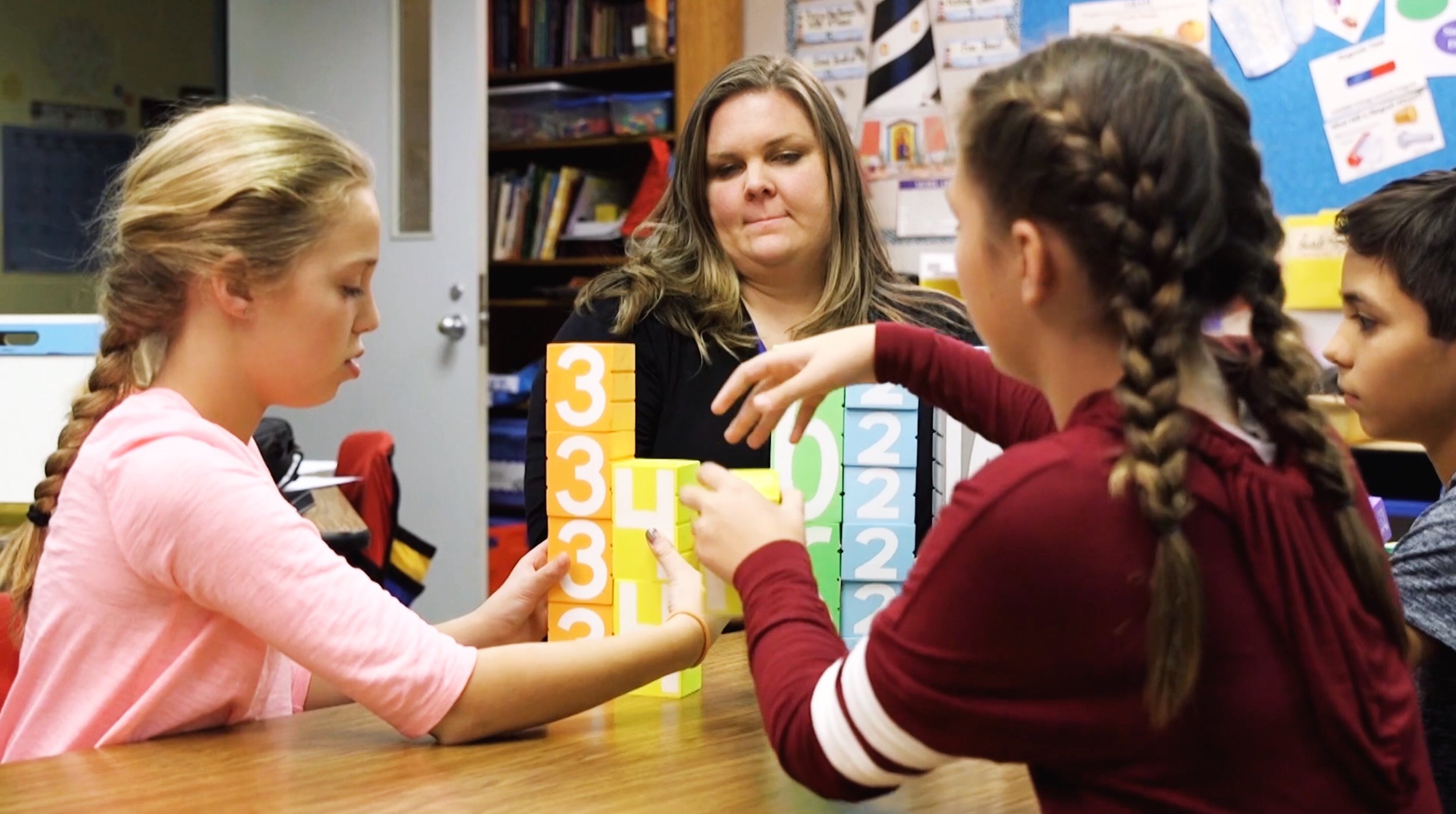Empower your students with small groups!
What is so great about teaching math in small groups?
Basically everything. But here are our top 4 reasons and how Math Stackers equips your classroom for small group teaching success:
RELATIONSHIPS DIFFERENTIATION EFFICIENCY EXPERIENCES
RELATIONSHIPS. Getting to know your kids is priority #1 for any educator. The deeper your relationship with each child, the more they will learn and grow. Because you are working with only 1 to 6 kids at a time, teaching math in small groups is a way to get to know your kiddos better, to listen to what they understand and wonder about, then guide them to connect these ideas with math.
We value your relationship with your students above all else. That is why every Math Stackers resource is designed for small group teaching full of questioning, investigation and discovery. Even the quantity of each block type was specifically picked to maximize learning for 1 to 6 kids at a time.
DIFFERENTIATION. More than likely you will have varying levels of understanding in a single classroom. When I (Kelly, Creator of Math Stackers) was teaching 3rd grade, I had students on a 1st grade level and also some on an 8th grade level of math reasoning. This is a huge spread and it was my job (and honor) to find ways to grow and challenge them all! Teaching in small groups is the best way to meet the needs of each student. In fact, my students grew so much more because of small group teaching that I decided to only teach math in small groups (no whole class teaching.)
*A side note: Centers are a great way to have your students independently (or in pairs) practice the concepts that were investigated in small groups with you, the two work beautifully together. However, centers in no way take the place of small group instruction where you are pinpointing the exact needs of a group of students.
The Math Stackers Discovery Guide and Early Learning Book are organized by concept so that you may easily find activities to use in your small groups that align with your district’s curriculum.
For Pre-K through Kinder, teachers may use the Early Learning Book to discover the following concepts in our 20 active games: counting, number recognition, 1-1 correspondence, comparing and ordering, measurement, patterns, subitizing and spatial reasoning. Each activity also includes an extension for your students who are ready to be challenged.
For grades 1 through 5, our leveled Discovery Guide includes 28 hands-on investigations and challenges to discover: addition and subtraction, multiplication and division, factors and multiples, equivalent fractions, comparing and ordering fractions, and adding fractions. When your students have mastered a level, they are ready to move on to the next level. If they still need some time to experiment and digest, they stay in the level they are currently investigating.
Each level in the Discovery Guide includes the following: a hands-on investigation where students prove and disprove their own math ideas (this is laid out step-by-step in our easy to follow small group format), a game or challenge that gets your kids up and interacting with what they have discovered in that level, a scannable augmented reality video that shows kids playing the game and then a “What are they learning?” section where the deep math in each level is explained (including and how the concepts lay the foundation for math success in the future.)
EFFICIENCY. It may seem like you can cram more information into a 30-45 minute whole-class lesson, but is all that information being heard, processed and understood by your 25 students? They may be looking at you, but some of their sweet brains are thinking about the last YouTuber they watched that morning and how to beat the next level of Fornite/Minecraft/Roblox, etc. It is much easier for them to stay engaged and participate in an investigation for a period of time if they are 1 to 3 feet from your beautiful, loving face. :) If they are engaged, investigating a concept and connecting it with other math ideas they have formed through discovery, they are far more equipped to think mathematically. This method of teaching may seem like it starts slowly; however, after your students have learned how to reason mathematically, they will be able to connect and solve new ideas much more efficiently and naturally as you progress in the school year.
Learning is much more efficient when it is THEIR idea! We can tell them what is “right” all day long but if THEY are the ones to discover a math truth, they will believe it and take ownership of their learning. In designing our investigations and activities, we take great care in forming opportunities for your students to be the ones to discover. This means that you as the teacher get to ask them all sorts of juicy math questions (found in the Discovery Guide) to encourage their inquisitive minds.
EXPERIENCES. Get their hands on the math. All research within the last 20 years recommends hands-on learning as the best way for kids to learn math concepts. (I even tried to find some that put it as #2, but was unsuccessful.) Kids need to interact with math, break it down, move it around, they need to be empowered to manipulate using the properties of math so that they make math work for them! The only way to do this is to get their hands on something that allows them to experiment and experience math in action. This is the way they will build connections that are vital to thinking mathematically. Small group teaching is the perfect opportunity to implement hands-on materials and strategies like Math Stackers!
Every aspect of our Math Stackers blocks is designed to get your kids’ hands on math thinking! The inch sections along the sides allow them to feel the value of each number, the blank backs represent fraction parts and unknowns, the logo is positioned on the bottom of every block so that the numbers may be positioned correctly. Because of the mathematical design, your students will be able to physically see if the math works or if they need to manipulate more to find their solution.
Because of this design, Math Stackers is a hands-on communication tool equipping your kids to express their own math ideas! One of the most powerful questions you could ever ask in your small group is, “How would you use the Math Stackers to show_____?", and then just watch as they stack their ideas before them.
Happy Math Stacking!
:) Kelly
P.S. Want a download of our Math Stackers Sample Pack including a checklist to get your small groups & stations started and a hands-on investigation chosen for your grade level? Sign up here.






